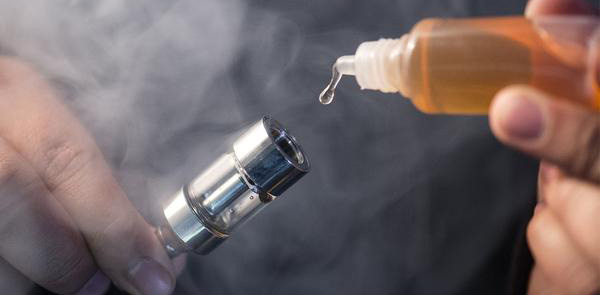PG (Propylene Glycol) vs VG (Vegetable Glycerin) – What’s in The E-juice?
When it comes to e-juice, two terms are constantly appearing: PG and VG. This may make the newcomer confusing, but knowing both ingredients can greatly improve your steamship experience. Here you will find our easy-to-understand guide to everything you need to know about PG and VG.
What are PG and VG?
PG and VG are odorless liquids that are combined with taste and nicotine to create e-juice. Both PG and VG belong to the chemical class of alcohol (despite the name they are not intoxicants). Although the e-liquid is sometimes called “oil”, it is not oil at all and can cause any medical problems, such as lipoid pneumonia, inhalation can cause the actual oils. They generate steam when heated, allowing them to be inhaled. The two liquids have a consistency that is different from each other, and they also have a slightly different taste. They have different sensations of the mouth and throat when they empty themselves. Most modern e-liquids use a combination of both fluids, although the relationship can vary considerably. Some vaping configurations can only work with a certain level of PG and VG. Choosing the wrong PG / VG ratio may deter beginners, so be sure to choose the right level for your equipment.
Now let’s take a closer look at each one
PROPYLENEGLICOL (PG)
What Is That Exactly?
Chemical Structure of Propylene Glycol
PG means propylene glycol, a by-product of oil. The liquid has no smell or color and is less viscous than VG. Vaporizing is used to create a “buttock” that, in the opinion of some users, resembles the sensation felt when smoking tobacco. It also carries the aroma more efficiently than VG, which means that it is the most commonly used suspension concentrate for flavor concentrates and nicotine.
How do we use it?
Propylene glycol can be found in many common items for the home. These include:
- Inhalers with nicotine
- Toothpaste and other oral hygiene products
- Medical devices, orally, injected or as topical formulations
- Pet food
- Beauty products, including make-up, shampoo and baby wipes
That’s for sure?
Studies have shown that PG can be taken orally, and the FDA has considered it as a food additive to be “generally accepted as safe”. Most studies on the safety of propylene glycol, however, analyze the intake, rather than consume it as an aerosol. Among the limited studies that exist, a long-term experiment from 1947 found that inhalation of PG was “completely harmless”.
A 2010 study that analyzed the EGP (a mixture of propylene glycol and glycol ether) suggested an increased risk of respiratory and immune disorders in children, such as asthma, hay fever, and developing eczema. However, it has been found that glycol ethers and not PGs are the most likely cause. In terms of evidence, it is reasonable to assume that PG is inhalable, but more extensive studies are needed to confirm this.
Many false-alarmed stories in the media claim that PG is a toxic substance used in antifreeze. However, there are two types of antifreeze: toxic and “non-toxic”. The toxic antifreeze uses the dangerous substance ethylene glycol, but is not used for vapors. In general, PG-based antifreeze is used in food processing machines where toxic antifreeze could be problematic and which is also sold in retail as”pet insurance antifreeze”.
While PG is safe for humans, it can seriously harm pets. It is generally considered to be a safe food additive for dogs but has been associated with Heinz anemia in cats. Be careful when moving near pets, especially if you have cats and use PG in your e-liquid.
What should I know about evaporation of PG?
Some people find a high level of PG that irritates the throat. Real allergies to PG are rare but have been reported. If you experience a rash or other unpleasant reaction after using a PG-based fluid, you may be less sensitive than PG and should use a high-VG juice instead. Many sellers offer this option.
The most common side effects with using e-liquid with propylene glycol are dry mouth, sore throat and increased thirst. These symptoms usually last for a few days to a week, when the body has become accustomed to propylene glycol. It is recommended to drink more water and liquids during the first few weeks of use of the electronic cigarette than usual. Keep in mind that any unusual reaction can be a side effect on exit, and not necessarily due to PG.
VEGETALE GLYCERINE (VG)
What is that exactly?
Vegetable Glycerin
VG stands for vegetable glycerin. It is a natural chemical derived from vegetable oil, which is safe for vegetarians. It is commonly used in the e-liquid to give the vapor a “thick” feel. VG has a slightly sweet taste and is considerably thicker than PG. The stroke of a VG high VG fluid is much smoother than PG, making it more suitable for sub-ohm vaping. While nicotine and flavors are usually suspended in the PG, some suppliers offer a VG alternative to allow 100% VG blends.
What is it for?
Again, it can be found in many medical, nutritional and personal care products:
- Sweetener as a sugar replacement
- Beauty products such as make-up, mousse, bubble bath, aftershave and deodorant
- Pet food
- Hand cream and soap
- Food like baked goods to increase the humidity
- Provide a thick gel for some medicated creams, pills and gelatins
- Toothpaste and other dentifrices
That’s for sure?
The FDA has classified VG as “generally accepted as safe” and is widely regarded as one of the most benign substances known to man. The SIDS evaluation profile shows that it is low in toxicity when consumed and has a low risk of irritating the skin or eyes. This, in conjunction with the widespread use of VG in foods and medicines, suggests that it is safe for humans. However, as with PG, there are limited studies on inhalation of LV instead of ingestion.
A 2008 study on the toxicity of glycerol inhalation in aerosols revealed minimal risks. We can assume that the use of VG in vaporizing does not have serious health effects, but like PG, we would like to receive more detailed studies.
It is important to remember that the risk of being allergic to vegetable glycerin is very low. Therefore, it is a useful alternative for people who have problems with the evaporation of PG-containing juice. If you are allergic to palm oil or coconut oil, VG may be a problem, but that is relatively rare. Diabetics may have problems with VG metabolism, but that would not be a problem with vaping.
What Should I Know If I Use VG?
The larger thickness of VG means that it can reduce the lifetime of the atomizers faster than the PG-based juice. Liquids with high LV clog the spirals faster and work poorly in some tanks. Older products are particularly sensitive, especially models that use smaller coils such as Clearomizer. The Nautilus series, iclears Innokin and eGo drums are some of the best-known tanks known for their difficulty handling high LV fluid.
The most common side effect of high LV E-Liquid is a dry mouth, sore throat and increased thirst. Make sure you drink plenty of water and, if necessary, take a steam break.
Which PG / VG report should I use?
There is not a single answer for that. It depends on the type of vaping experience you prefer. Many people use different levels of PG and VG for different purposes:
Stroke in the throat: If you have a dry whack in the throat during evaporation, you prefer a high content of PG. The “kick” on the back of the throat is something that many ex-smokers feel and PG (with nicotine) offers more than what VG does. PG has a slightly better taste than VG, so the flavor is slightly improved.
Sweetness – High VG fluid tends to produce a much softer throat feel, with a thicker and thicker mouthfeel. The taste is easily crushed in VG fluids, but this can be prevented by using more energy to create more steam. Make sure you stay within the limits of your nebulizer or run the risk of being bumped or damaging your equipment.
Stealth Vaping: If you want to keep your vakey lowkey in public, PG High is the way to go. Less steam is produced during exhalation, making it ideal for less swanky steam enthusiasts. However, you should always use common sense. Vaping in some places, such as waiting rooms and public transport, is often banned and simply rude. As Vaping is relatively new, it is our duty to respect public opinion and act responsibly.
Cloud chasing – cloud computing involves the exhalation of dense vapor clouds, the thicker the better. There are even competitive events based on this activity where the person producing the largest clouds wins. If this attracts, then high VG is the only option: the highest, the best.
BOTTOM LINE
The basic concepts of PG and VG are very easy to understand. Both work in different ways and each have its advantages and disadvantages. Our advice is to start with a ratio of 50-50 PG to VG, then try out several combinations and see which ones you prefer. Make sure your vaping setup can handle the different proportions.
Many Vapers like to use different levels of PG and VG at different times and with different devices and tastes. The fruit and beverage aromas often go well with PG, as the clarity of the PG blends well with the cake or the effervescence of the aroma. Similarly, cream-based flavors, cream and yogurt tend to work well with high VG, because the thick mouthfeel increases the sensation of a dessert. But as always there are no fixed rules, just follow what your palate tells you!








11 Responses
[…] you do not want to use clear water, you can soak your tank in propylene glycol. Just fill a bowl or cup with your non-flavored PG and let it soak. You can also use VG, but it […]
[…] uses base ingredients to create a smooth flavor. This base can consist of PG (Propylene Glycol), VG (Vegetable Glycerin) or both. OMEGA e-Liquids contain 70% PG/VG 30%. PG and VG are combined with natural or artificial […]
[…] are what steamers usually find. This is because the base of the e-liquid we spray is made of propylene glycol (PG) or vegetable glycerol (VG) or a combination of both. PG and VG are hygroscopic. It means that they absorb […]
[…] Vegetable Glycerin (VG) […]
[…] Vegetable glycerin (VG) […]
[…] are likely to meet all your needs: They offer dozens and even hundreds of flavors, various VG / PG reports as well as different levels of nicotine. However, there is one thing that many of the […]
[…] vegetable glycerin based oil is mixed with CBD and intended for oral utilize. You should simply take the suggested […]
[…] can choose any VG / PG mix according to your recipe, but it is usually between 50/50 and 80/20. Keep in mind that diluted […]
[…] this could just be your juice. It may contain too much VG for your device as it is thicker than PG. Experiment with a lower VG, a higher PG E-Liquid, until you find the right balance for your device. Sometimes the e-liquid that uses too much […]
[…] Now let’s start with the process. Remember to use high quality material and ingredients. You can make your CBD in any size container but we will go for the 15mL bottle having a 60 to ratio for VG to PG. […]
[…] e-juice is vaping liquid with CBD in it. CBD e-juice has PG or VG for its composition. There is no CBD oil in CBD e-juice. You can use a vape pen (disposable) if you […]